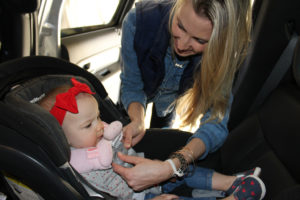Car Accident Lawyer Outer Banks
While the risk of being seriously injured in a car accident is high for anyone, that risk is exceptionally high for children. According to the Centers for Disease Control and Prevention (CDC), motor vehicle accidents are a leading cause of death among children in the United States, killing almost 600 children each year. Another 100,000 suffer serious significant injuries. Even more disturbing is that nearly 35 percent of children who die in car accidents were not buckled up.
The best way to keep your child safe when riding in a vehicle is to ensure they are properly restrained in the appropriate seat for their height and weight. North Carolina has stringent child passenger laws that parents should follow to make sure their children are protected at all times. If your child has been injured, call our office to speak with an OBX car accident lawyer to see what legal options you may have.
What Is the State Law for Car Seat Safety
In North Carolina, child passenger safety is governed by specific laws designed to protect young occupants in motor vehicles. According to the North Carolina Child Passenger Safety Law (G.S. 20-137.1), any driver transporting a child under 16 must ensure the child is properly secured in an appropriate restraint system.
Non-compliance with these laws can result in a penalty of up to $25, along with court costs and fees. Drivers will also receive two driver’s license points, though no insurance points will be assessed. Notably, if a driver is charged for not securing a child under 8 years old and can prove in court that an appropriate restraint system has been acquired since the violation, they may avoid conviction.
The law also specifies seating positions based on the child’s age and weight. Children younger than 5 years old and weighing less than 40 pounds must be seated in the rear seat if the vehicle is equipped with an active passenger-side front airbag and a rear seat is available. This requirement aims to prevent injuries from airbag deployment. However, if the child restraint system is designed for use with airbags, this restriction may not apply.
Infants
North Carolina law requires all children under the age of two or until they reach the minimum weight limit for a forward-facing safety seat (per the manufacturers’ instructions) to ride in a rear-facing safety seat. This is also recommended by the American Academy of Pediatrics and the National Highway Transportation Safety Administration. Parents should never place a rear-facing safety seat in the front seat of a vehicle with an active passenger airbag. This could be deadly to a baby if the airbag should deploy for any reason.
Toddlers
Once a child has outgrown their rear-facing safety seat, they should ride in a forward-facing seat with a five-point safety harness. The seat should always be in the back seat. When the child has outgrown the forward-facing seat, parents should begin using booster seats until the child is big enough to fit the seat belt in the vehicle. N.C. law says children should be in a booster seat until they are 8. The booster seat should also always be in the back seat.
For optimal safety, it’s recommended that children be kept in rear-facing car seats as long as possible, transition to forward-facing seats with harnesses when appropriate, and use booster seats until the vehicle’s seat belt fits properly without assistance. Always refer to the car seat manufacturer’s instructions and ensure the restraint system is installed and used correctly.
When Should Parents Use Seat Belts for Children?
Once a child reaches 8 or 80 pounds, they may transition to using a standard seat belt, provided they are at least 4’9” tall and the belt fits correctly across their lap and shoulder. The child’s knees should bend over the edge of the backseat cushion, and their feet should rest flat on the floor. Make sure the child is sitting with the back against the seat.
To ensure proper fit, the lap belt should lay low and snug across the child’s hips, touching their upper thighs, and the shoulder belt should fit across their chest, midway between the child’s neck and shoulder.
Exemptions to these requirements include vehicles not required by federal law to have seat belts (such as certain older models and large buses), ambulances, and other emergency vehicles.
How Can Our Firm Help?
Unfortunately, no matter how much we protect our children, there is always the risk that they will still be injured in a crash caused by another driver. If your child has suffered an injury in an accident caused by the negligence of another party, call one of our OBX car accident attorneys to find out what legal options may be available.
Our firm will work on your behalf to get you the best possible financial outcome based on the circumstances of your case, like the $50,000 settlement we obtained for one client who suffered intense, chronic shoulder and neck pain (including a reaggravation of her prior shoulder injury) when another driver pulled out from a parking lot directly into the path of our client’s vehicle.
Car accident claims involving child victims can be complex, including the statute of limitations for filing a claim and other factors. Your child may be entitled to financial compensation for both past and future medical expenses, pain and suffering, emotional anguish, scarring, disfigurement, and any permanent disabilities their injuries may have left them with.
Contact Shapiro, Washburn & Sharp to schedule a free case evaluation and find out how we can help.
